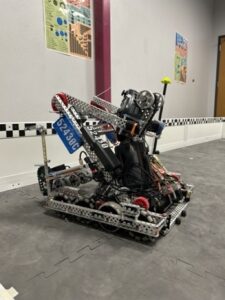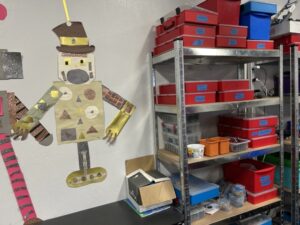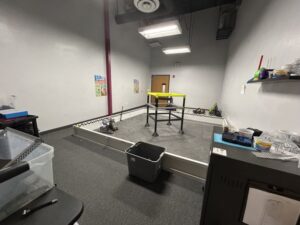Trip to Ahwatukee – What I Learned
MJ j -
Hello all, and welcome to my seventh blog post.
This week, I attended a Robotics Engineering class at BASIS Ahwatukee, taught by Jennifer Murillo. During the session, Mrs. Murillo provided instructions to the students, who were actively building a claw robot using VEX guidelines in groups. While they worked, I had the opportunity to ask Mrs. Murillo several questions about her teaching approach and the class’s logistics. Below are 10 of the questions I asked her, along with her responses.
- What are the students expected to have learned by the end of the year?
They should have introductory knowledge on Electrical Engineering, Mechanical Engineering, and Computer Science.
2. What things do the students seem to enjoy building and learning about?
The students love building robots within teams and then competing against one another to see what robot could perform the given instructions better/more efficiently.
3. What topics do the students have the hardest time grasping?
The students have the hardest time grasping the math and physics behind robotics.
4. Any suggestions for teaching any particular topic?
For teaching Artificial Intelligence, use Code.org
5. Where did the finances used to buy the kits and materials come from?
The finances came from the cost of the class itself, since it is an elective.
6. What programming language do you teach the students in the curriculum?
Block-based code, similar to Scratch, is taught. If students desire, they can also learn Python.
7. When the students do build something, is it individual or group-based? If both, which seems to work better?
Almost always, the work the students do is group-based.
8. Do you talk about Artificial Intelligence at all in the course?
Yes, Artificial Intelligence and Machine Learning are taught in the course.
9. What medium do you use to teach the topics at hand?
Most topics are taught through PowerPoint, with images and instructions regularly taken from VEX curriculums and embedded as part of the presentation (with proper citing)
10. Is there any other advice you have on a class on robotics?
Make sure the students understand the physics and math before delving into the concepts. No need to go super specific on any topics. Use VEX EXP and VEX V5 and Trashbots.
Below are a few pictures I was able to take with descriptions on what is being shown:
This first image depicts a shelf in the classroom with different parts that are sorted according to their function and/or the company that made them (VEX parts vs LEGO parts, for example)
This second image shows a separate room connected to the main room that houses the area for competition. Although this space is primarily used for kids that are in the robotics club that they have at BASIS Ahwatukee, the upper school robotics engineering class also uses it from time to time. On the left of the image, you can see a table with a bucket on top of it. That wall is the workshop for many of the hands-on building, specifically the more complicated VEX builds that require screws, etc.

This is a zoomed in picture of the robot you can see in the last picture as well. Even though this robot was made by students in the robotics club (not the class), I still thought it looked cool and decided to put it here as an example of what complex robots could really look like.

This last image shows a cart that is overflowing with LEGO pieces. I was amazed at how many legos were actually on the cart, as I don’t think this picture does it enough justice. Further, the students were actually going to the cart and looking for pieces they needed to build a claw robot the day I was there.
This experience allowed me to learn how to best navigate a robotics class as well as give me ideas on how to frame the robotics class I am making. This upcoming week, I am hoping to solidify a rough draft of a curriculum that I could even test myself later on.
Until Next Time!



Comments:
All viewpoints are welcome but profane, threatening, disrespectful, or harassing comments will not be tolerated and are subject to moderation up to, and including, full deletion.